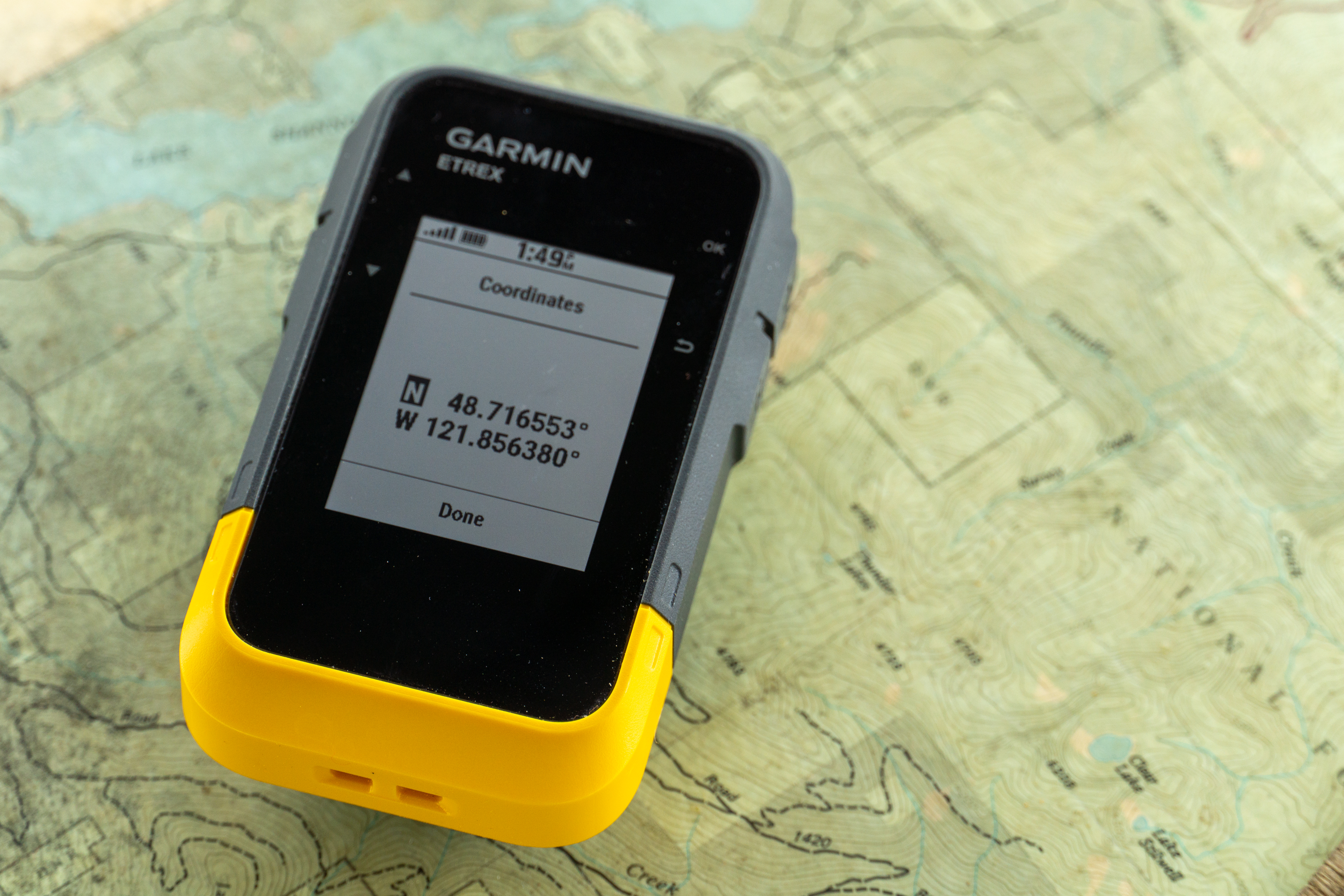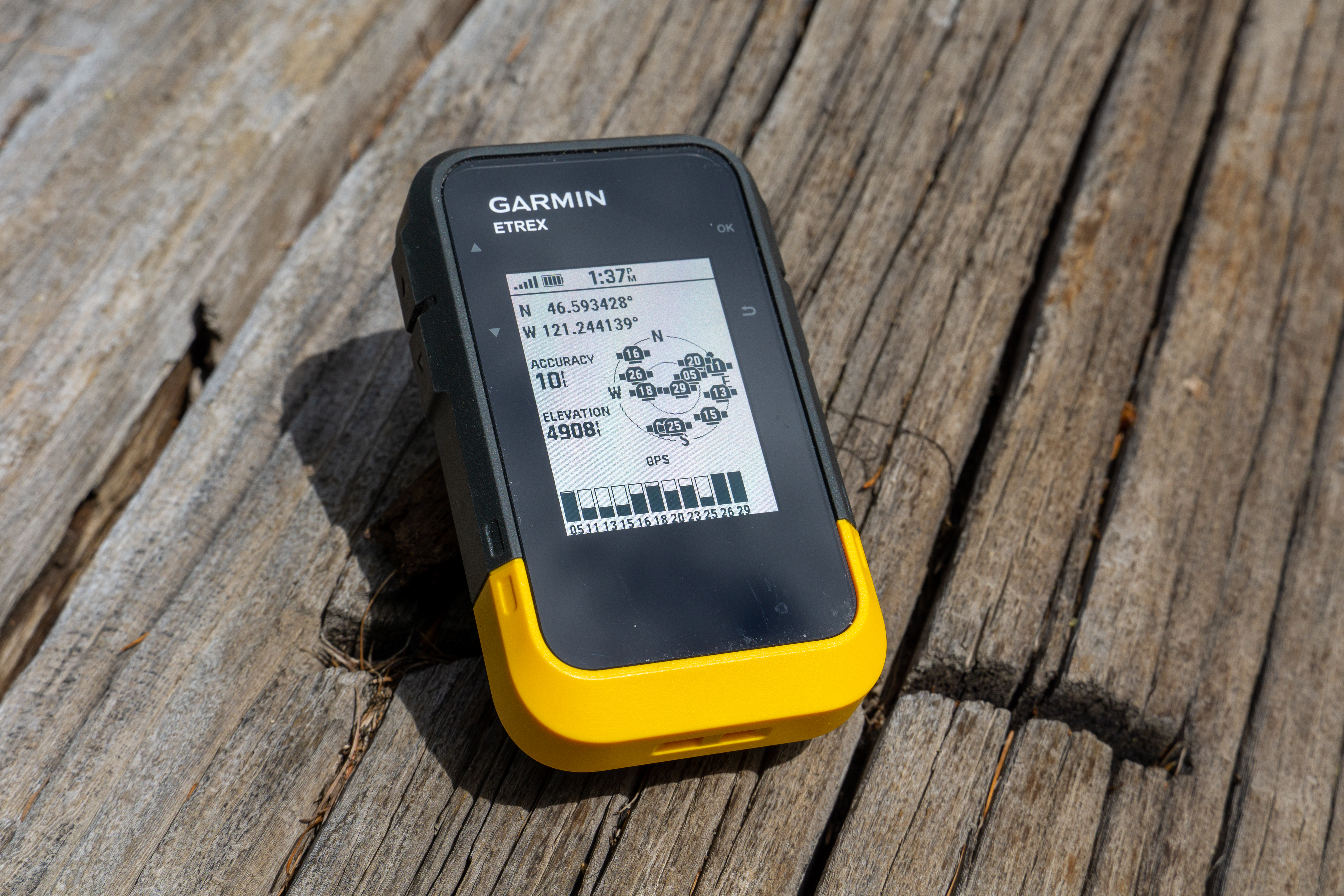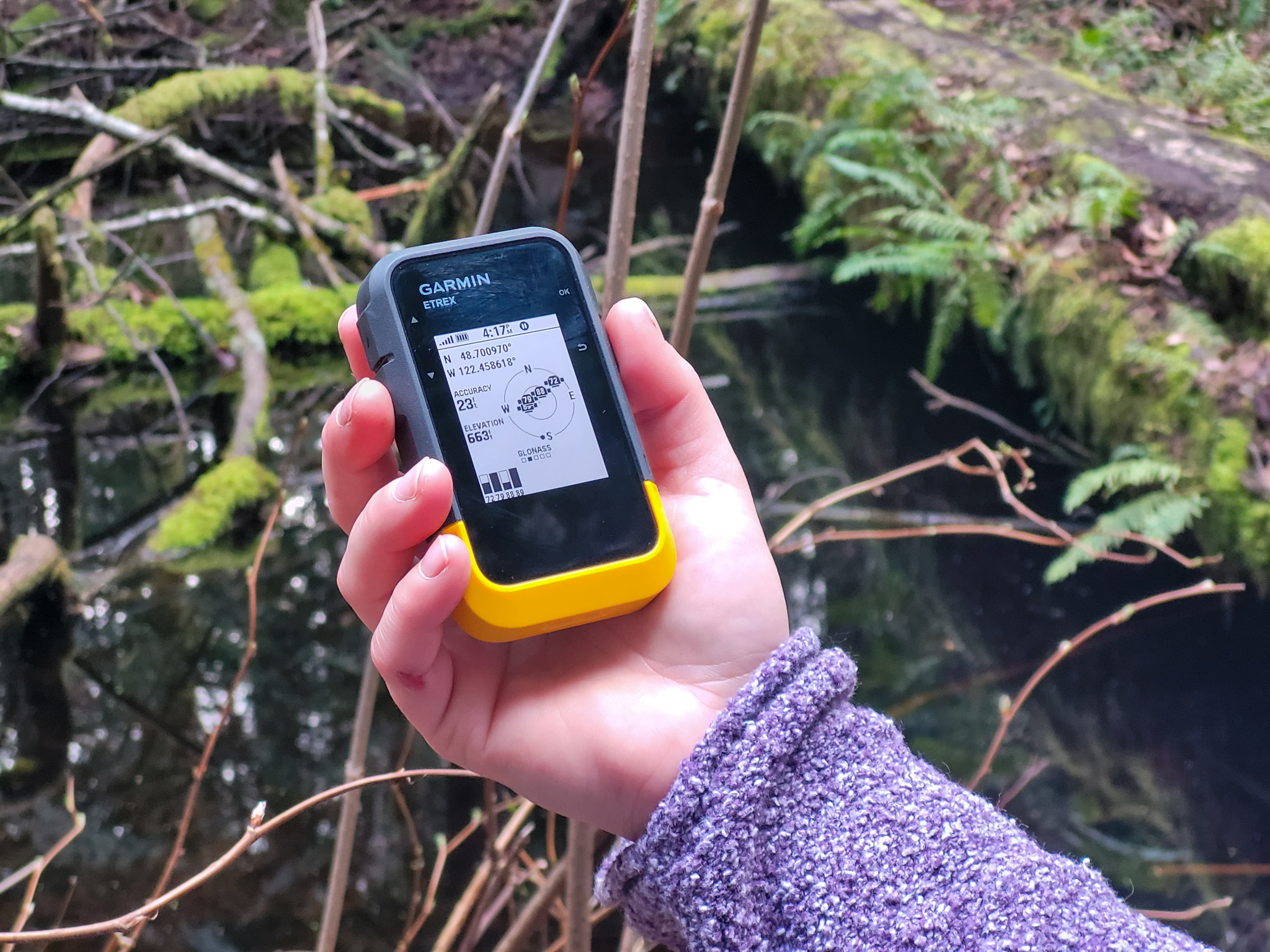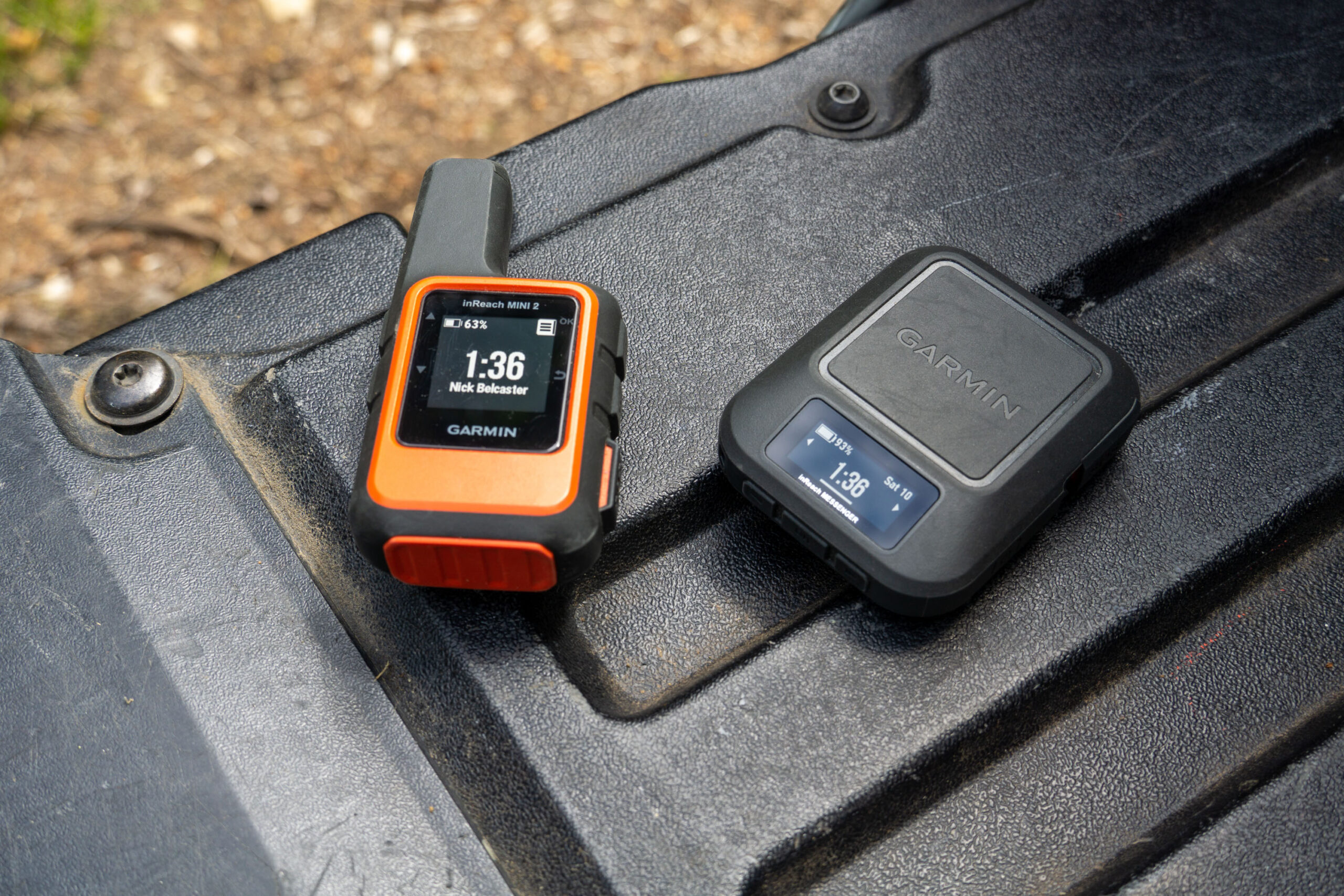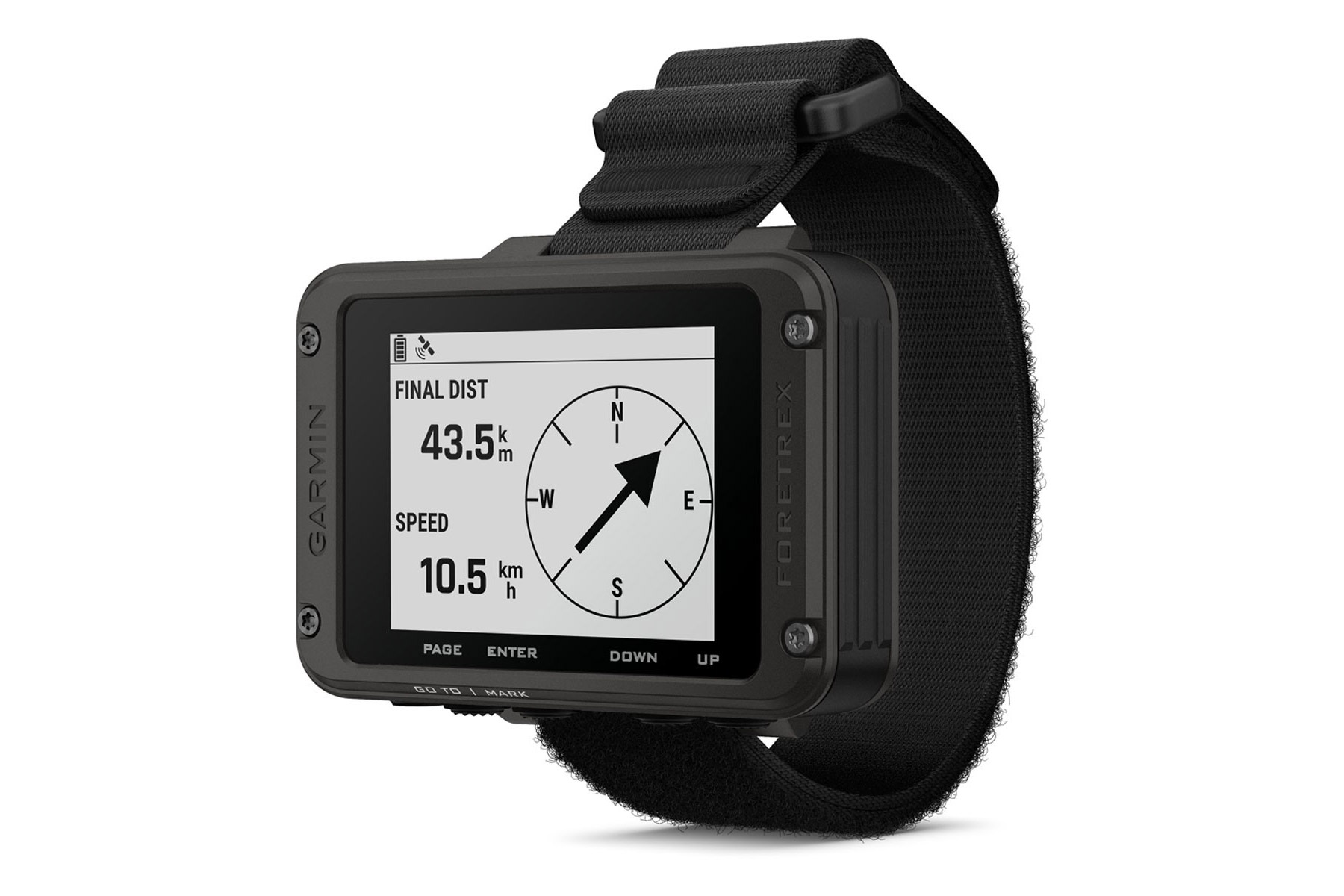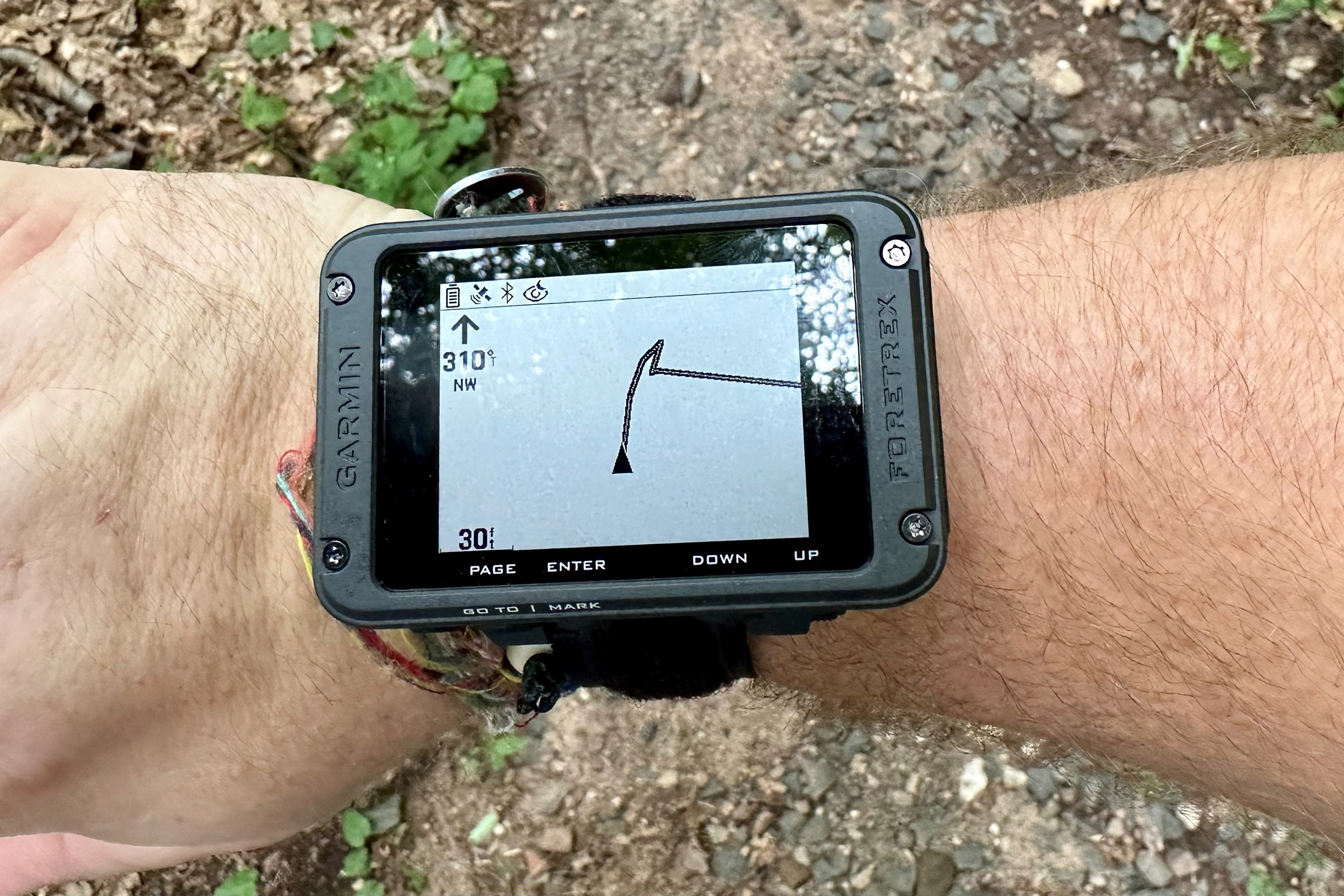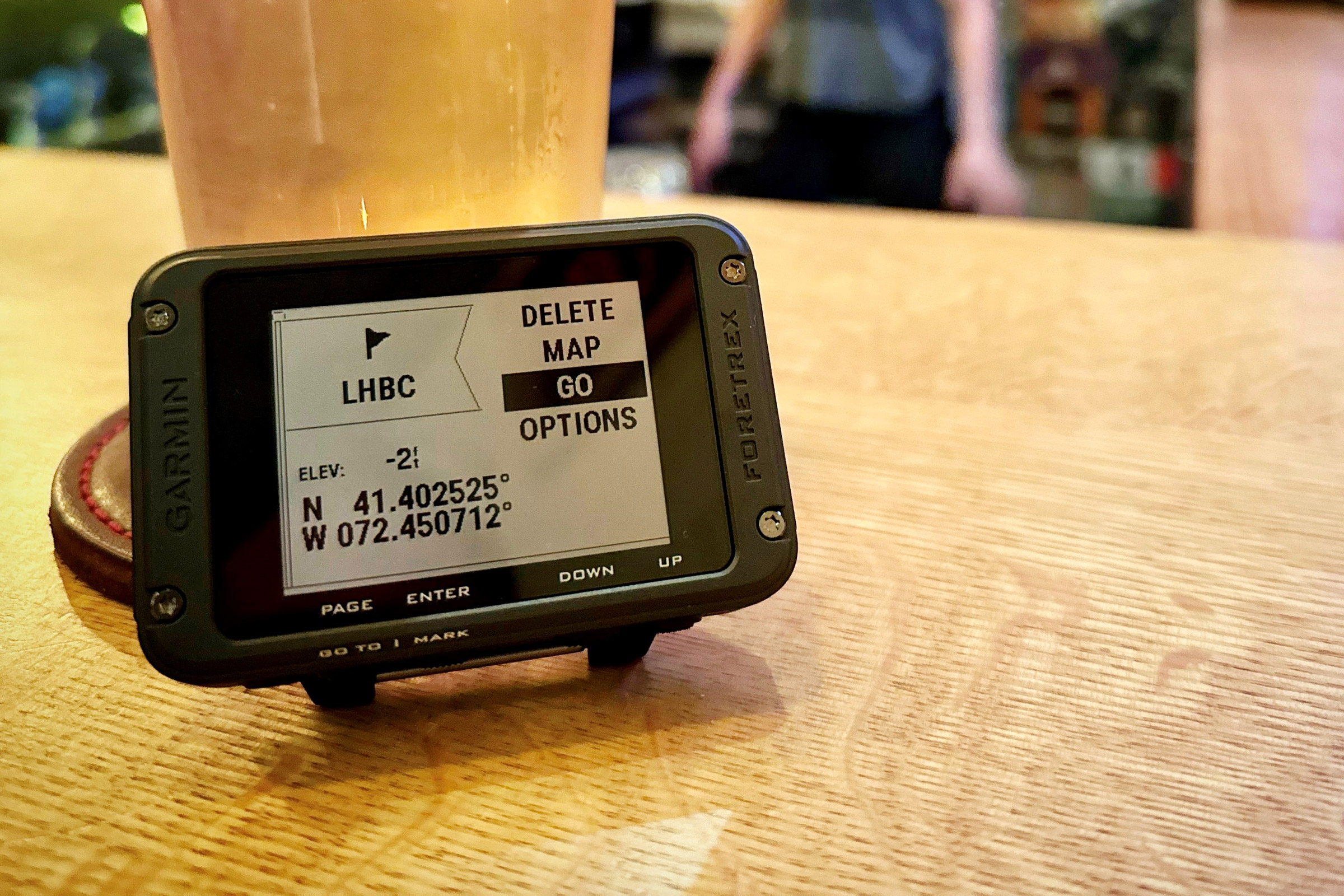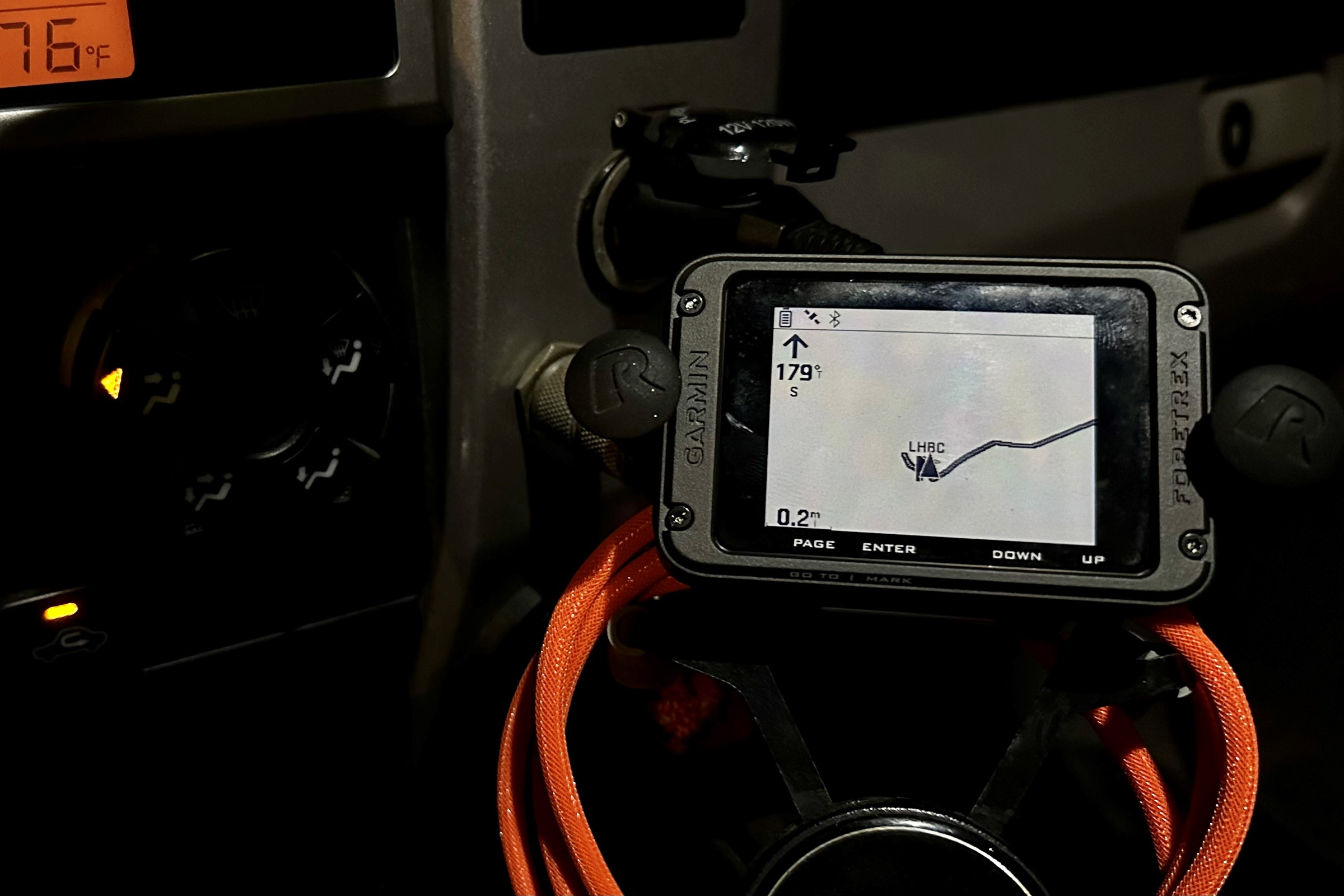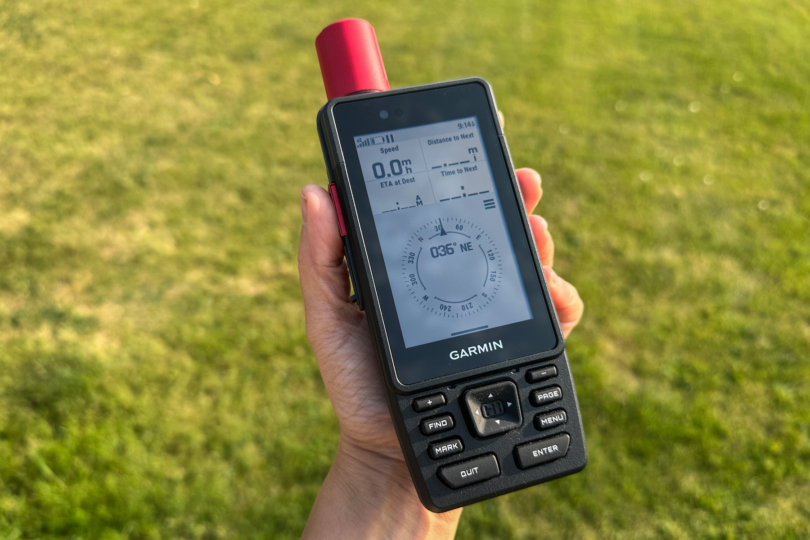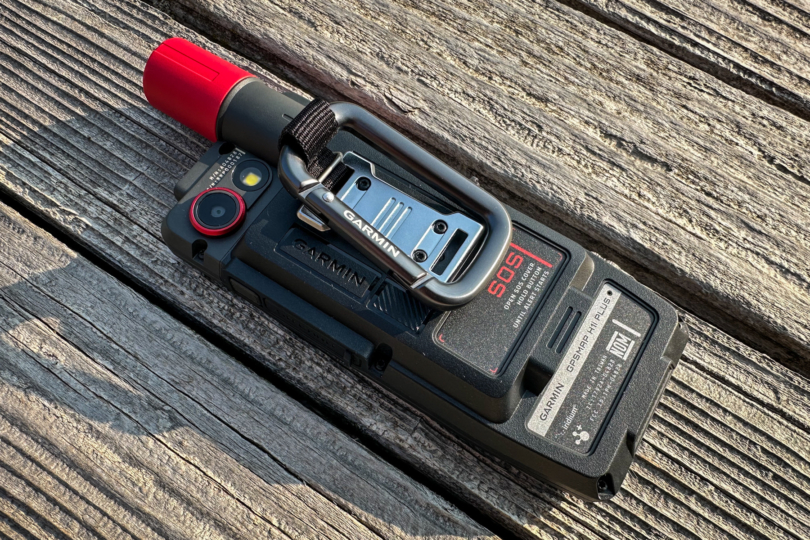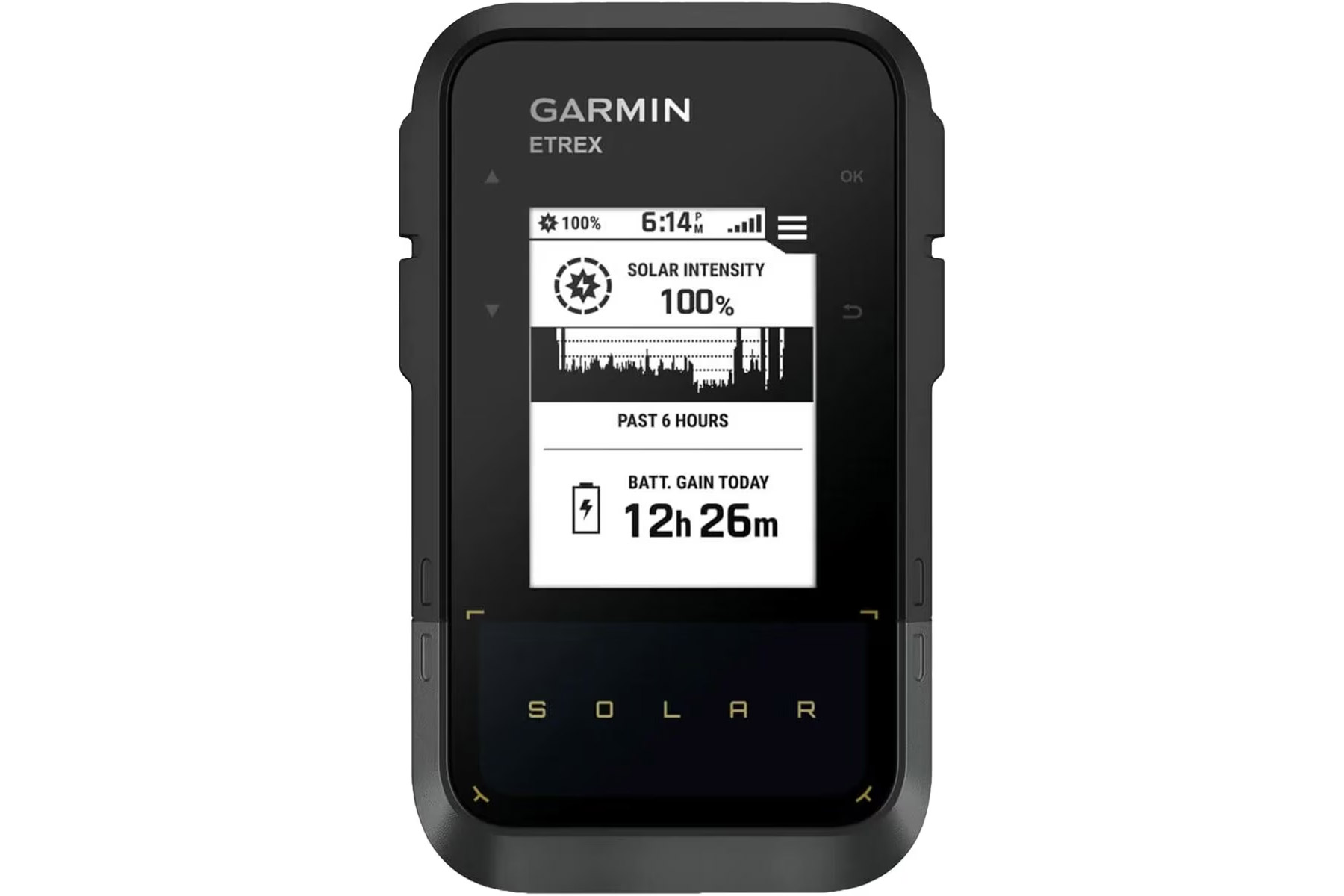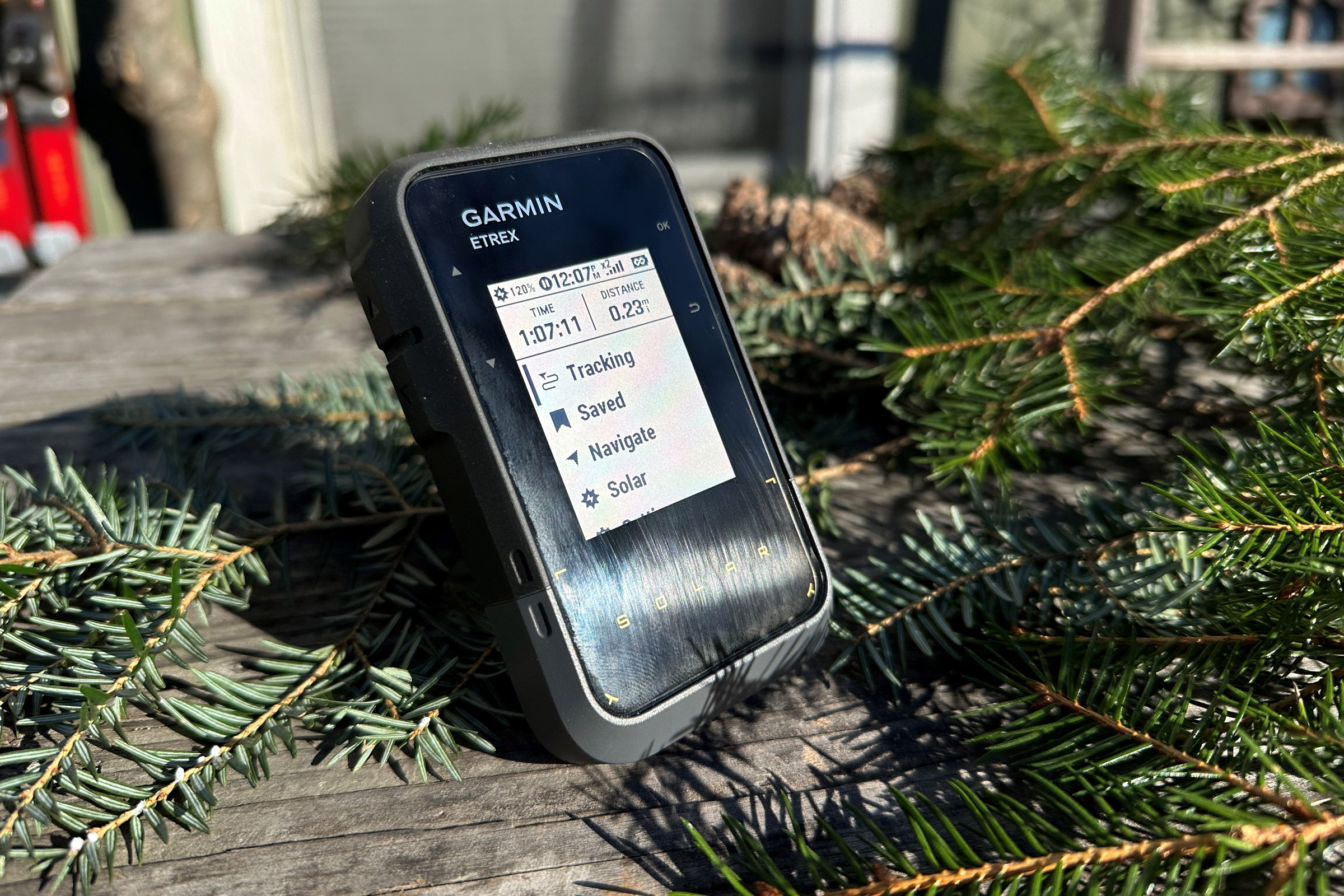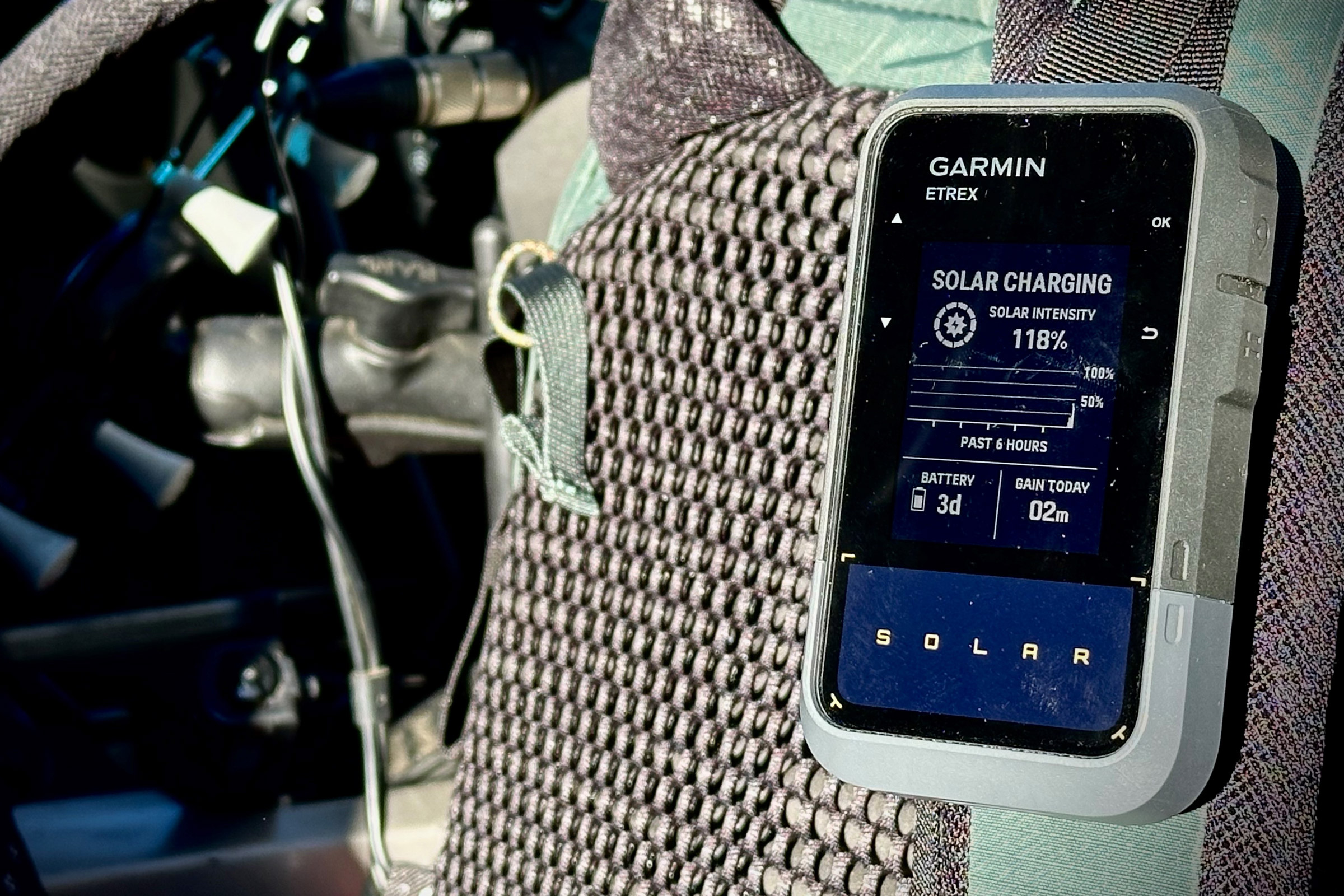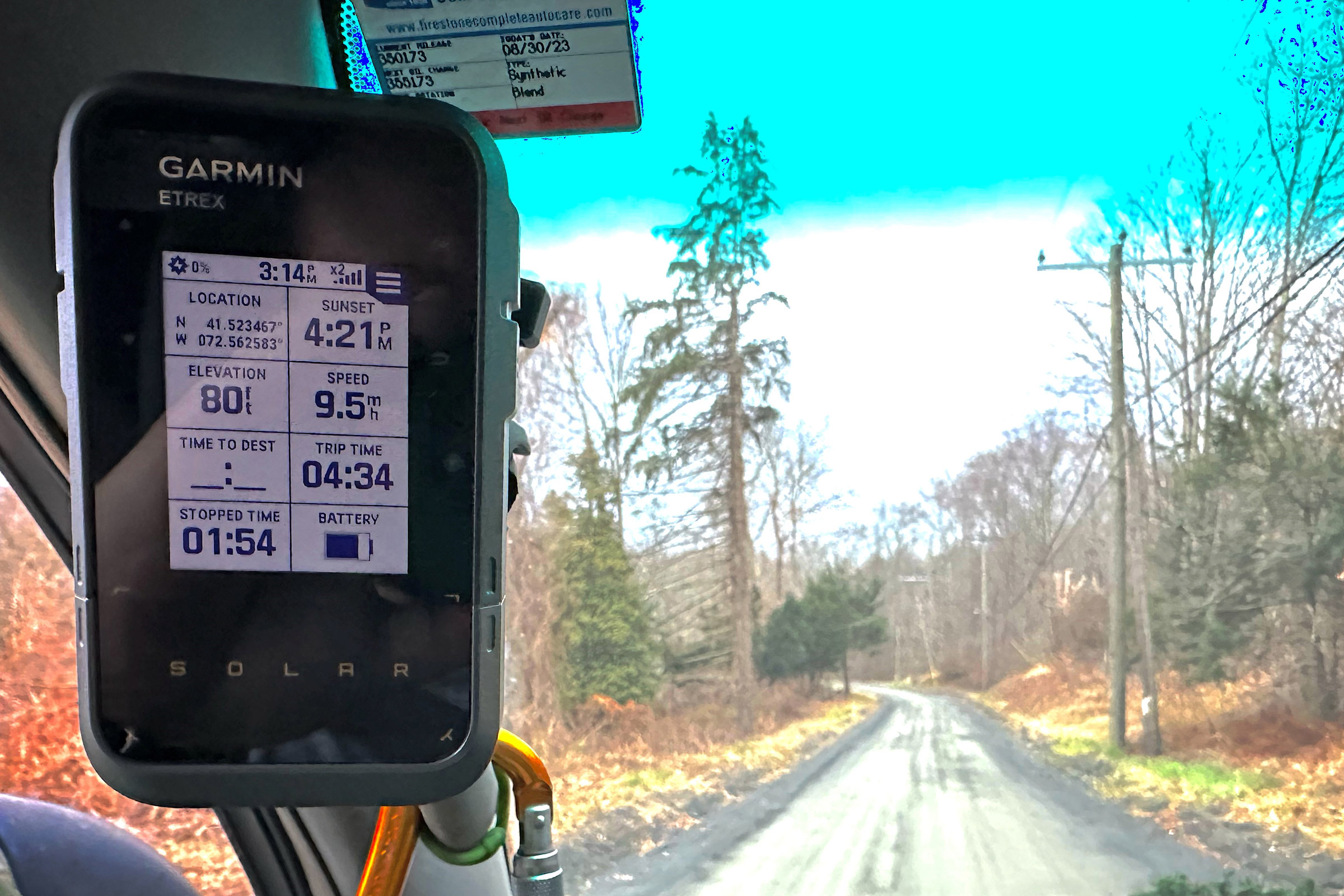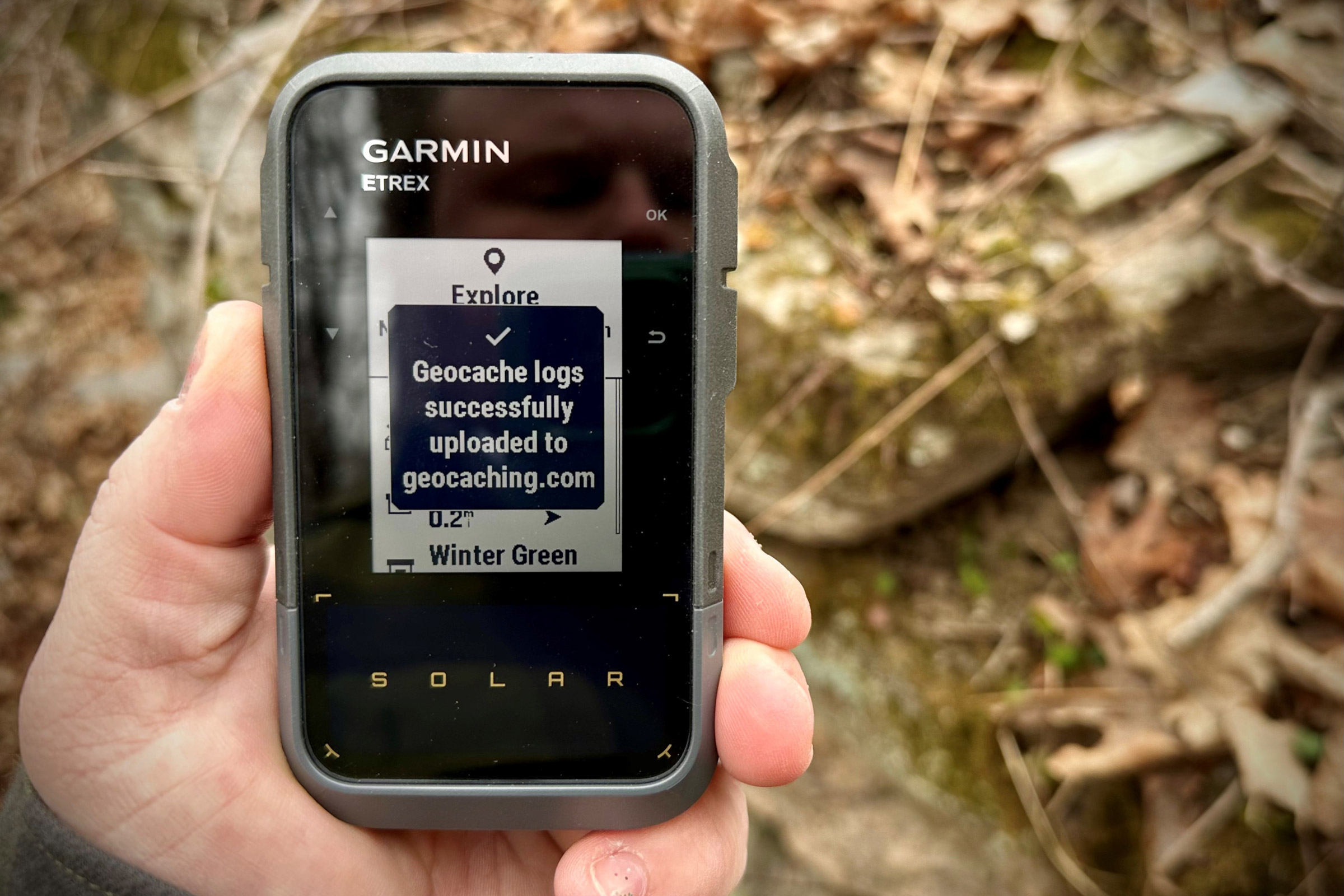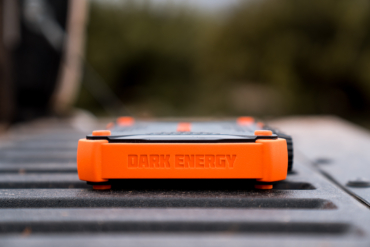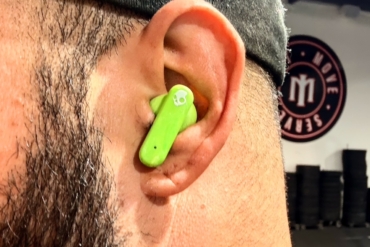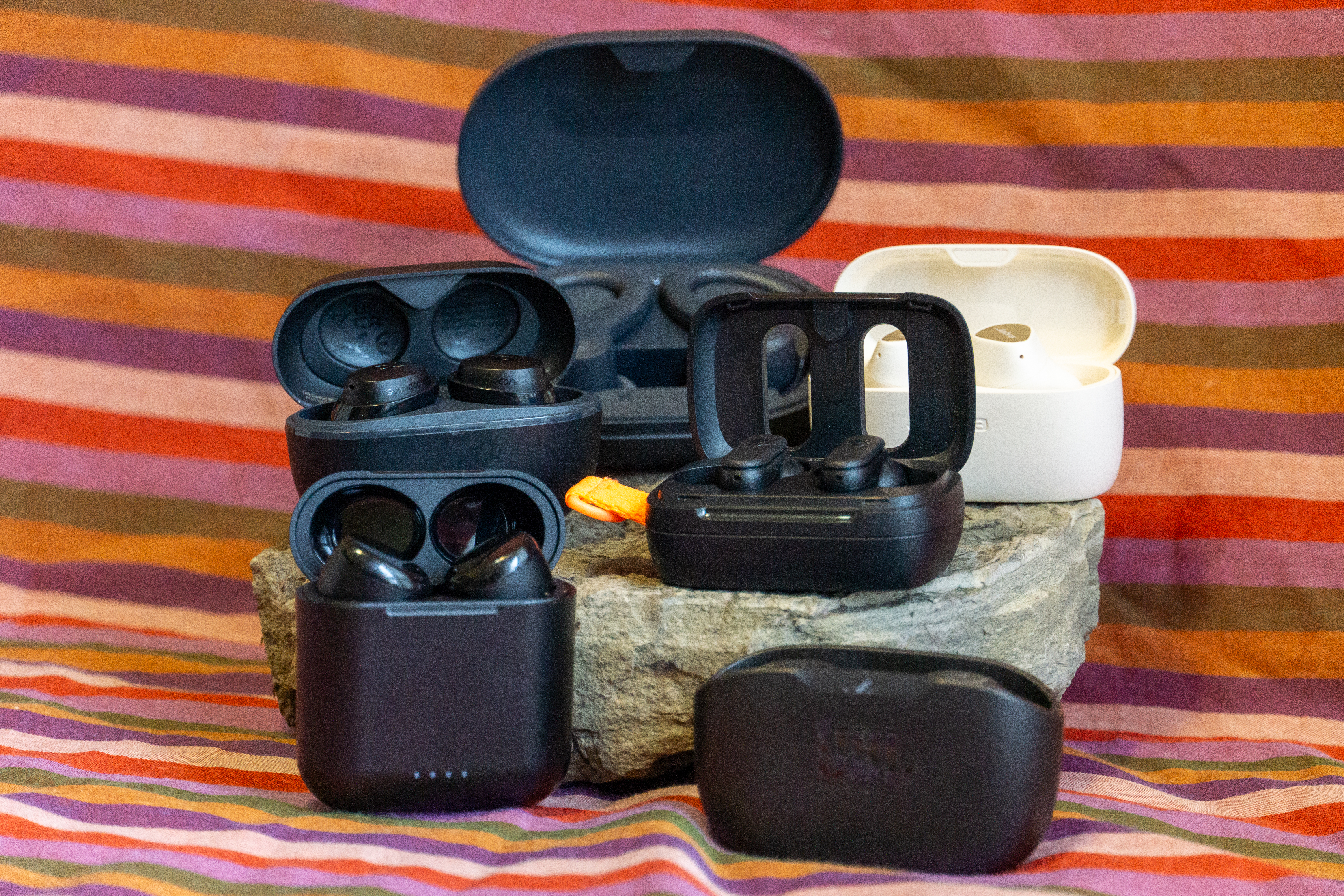While smartphones will get the job done, they can’t match the enhanced capabilities of a dedicated GPS device. We’ve been putting the best handheld GPS to the test for close to a decade now, pulling together eight winners that’ll get you where you’re headed — no questions asked.
Knowing what you’ll use a GPS for is the first step in snagging one, and there are specialized units ideal for backpacking, hunting, and even off-roading. My top-pick Garmin GPSMAP 67i is the GPS your pops dreamed about with all the bells and whistles, while the budget-friendly Garmin eTrex SE provides simple breadcrumb tracking as a backup.
My suggestions aren’t one-offs, either. Our team has hit the dirt with these units, connecting waypoints, navigating by dead-reckoning, and tracking our trips. From wandering the hardwoods of Connecticut to connecting alpine basins across the West, our experts compared GPS tracks down to mere feet in order to separate the worthy from the weak.
Editor’s Note: We updated our Handheld GPS guide on November 14, 2025, to add the new Garmin GPSMAP H1i Plus — a do-it-all backcountry device that’ll text, send photos, and even offers voice control — as well as ratings to each device. We also updated our testing information with added details.
The Best Handheld GPS of 2025
Garmin GPSMAP 67i
-
Satellite Reception
8.0
-
Feature Set
9.0
-
Battery Life
8.0
-
Durability
8.0
- Battery Life: 180 hrs. in standard mode; 840 hrs. in expedition mode
- Battery Type: Internal Li-ion rechargeable battery
- Weight: 8.1 oz.
- Memory: 16 GB with expandable memory
- Screen Size: 3" diag.
- Rating: IPX7, MIL-STD-810
- Connectivity: USB-C, Wi-Fi, Bluetooth, ANT+
- Sensors: GPS, Galileo, QZSS, Beidou, IRNSS / Barometer altimeter + compass
- Subscription Plan: $14.99 per month for annual 'Consumer: Essential' plan
Pros
- Incredible updated battery life over previous model
- Large, bright, easy-to-see display
- On-board messaging capabilities
- Waterproof rating of IPX7
- Expanded global navigation system and multiband technology
Cons
- Larger overall size
- Pricey if you don't need the GPS abilities
Garmin eTrex SE
-
Satellite Reception
7.0
-
Feature Set
6.0
-
Battery Life
7.0
-
Durability
7.0
- Battery life: 168 hours in standard mode; 1,800 hours in expedition mode
- Battery type: 2 AA
- Weight: 5.5 oz.
- Memory: 28 MB
- Screen size: 2.2” diag.
- Rating: IPX7
- Connectivity: Bluetooth
- Sensors: GPS, Galileo, GLONASS, QZSS, BeiDou
Pros
- Impressive battery life
- Connectivity with the Garmin Explore app
- Multi-GNSS support
- Digital compass
- Supports real-time weather forecasting
Cons
- Black and white screen
- AA battery supply may not be for everyone
Garmin inReach Mini 2
-
Satellite Reception
7.0
-
Feature Set
7.0
-
Battery Life
8.0
-
Durability
8.0
- Battery Life: Up to 336 hrs. (in 10-minute tracking mode)
- Battery Type: Rechargeable internal lithium-ion
- Weight: 3.5 oz.
- Memory: Can save up to 1,000 waypoints
- Screen Size: 0.9" diag.
- Rating: IPX7
- Connectivity: USB-C, Bluetooth, ANT+
- Sensors: GPS, Galileo, QZSS + compass + Iridium
Pros
- Custom messaging capability
- Lightweight and compact
- Two-way messaging capability
- IPX7 water-resistance rating
- Passive tracking mode allows others at home to track your position
Cons
- Limited navigation and mapping features
- Paid subscription is required for all communication features
- Difficult to navigate in-device
Garmin Foretrex 801
-
Satellite Reception
7.0
-
Feature Set
7.0
-
Battery Life
7.0
-
Durability
9.0
- Battery Life: 100 hrs. in standard mode; 1,000 hrs in expedition mode
- Battery Type: 2 AAA (lithium, NiMH, or alkaline)
- Weight: 3.8 oz.
- Memory: 500 waypoints, 100 tracks, 50 navigation routes
- Screen Size: 2.2”
- Rating: MIL-STD-810 + IPX7
- Connectivity: USB-C / Bluetooth / ANT+
- Sensors: GPS, GLONASS, Galileo +Baro + Altimeter + Compass
Pros
- Compact, durable, easy-to-understand interface
- Minimal interaction is needed in the field to get the info you need
- Battery life is impressive, and runs on AAA cells
- Tough built case
- Pairs with Garmin Explore app for more mapping functionality
Cons
- Could be overkill for folks walking around their local dog park
- The band that it comes with is all right, but there are much better options
Garmin GPSMAP H1i Plus
-
Satellite Reception
9.0
-
Feature Set
9.0
-
Battery Life
8.0
-
Durability
8.0
- Battery Life: Up to 145 hours in standard mode; 840 hours in expedition mode
- Battery Type: Lithium-ion
- Weight: 10.2 oz.
- Memory: 64 GB
- Screen Size: 3.5" diag.
- Rating: IP67
- Connectivity: Wi-Fi, Bluetooth, ANT+
- Sensors: Multi-Band GPS, Galileo, QZSS, BeiDou, IRNSS
Pros
- Integrates photo and voice inReach messaging ability
- Bright touchscreen display
- Cameras and microphone built in
- Full GNSS suite with Multi-Band capabilities
Cons
- Price
- Large handheld size
Other Handheld GPS Devices We Trust
-
Satellite Reception
8.0
-
Feature Set
8.0
-
Battery Life
8.0
-
Durability
8.0
- Battery Life: 200 hours in standard mode; up to 1,800 hours in expedition mode; unlimited with solar
- Battery Type: Internal rechargeable lithium ion
- Weight: 5 oz.
- Memory: 28 MB
- Screen Size: 2.2”
- Rating: IPX7
- Connectivity: USB-C / Bluetooth
- Sensors: Multi-band GPS, GLONASS, Galileo, QZSS, Beidou, IRNSS + Compass
Pros
- Solar cells in screen powers device indefinitely in direct sunlight
- Multi-band GPS reception
- Modern USB-C charging
- Affordable pricing
- Simple feature set executed well
Cons
- Notifications don’t go away on their own
- Black and white screen isn't the nicest to use
-
Satellite Reception
6.0
-
Feature Set
6.0
-
Battery Life
6.0
-
Durability
7.0
- Battery Life: 25 hrs.
- Battery Type: 2 AA
- Weight: 5 oz.
- Memory: 8 GB
- Screen Size: 2.2" diag.
- Rating: IPX7
- Connectivity: Mini-USB
- Sensors: GPS, GLONASS
Pros
- Budget price
- Simple, easy-to-use interface
- Lightweight and compact
- Easy to mark and save waypoints
Cons
- Only two GNSS receivers
- Lacks barometric altimeter and three-axis compass
- Interface feels antiquated
- Mini-USB charging, not USB-C
-
Satellite Reception
7.0
-
Feature Set
8.0
-
Battery Life
6.0
-
Durability
8.0
- Battery Life: 18 hrs.
- Battery Type: Rechargeable lithium-ion battery
- Weight: 1 lb., 7.3 oz.
- Memory: 16 GB and compatible with micro-SD cards
- Screen Size: 5" diag.
- Rating: IPX7, MIL-STD-810
- Connectivity: Micro-USB, Wi-Fi, Bluetooth, ANT+
- Sensors: GPS, Galileo + barometer altimeter + compass
Pros
- Huge, high-resolution display
- Integrated satellite messaging and SOS capability
- Rugged construction with Gorilla Glass screen
- Lots of internal memory
- Can be run on a powered vehicle mount
Cons
- Only two GNSS receivers
- Shorter battery life
- Heavy and bulky
- Expensive
-
Satellite Reception
6.0
-
Feature Set
6.0
-
Battery Life
5.0
-
Durability
6.0
- Battery Life: 2 AA batteries last up to 25 hrs. before needing replacement
- Battery Type: 2 AA
- Weight: 5 oz.
- Memory: 8 GB, micro-SD card compatible
- Screen Size: 2.2" diag.
- Rating: IPX7
- Connectivity: Mini-USB, ANT+
- Sensors: GPS, GLONASS + barometric altimeter + compass
Pros
- Clear and bright color display
- Built-in compass and barometric altimeter
- Easy-to-press large buttons
- Reliable AA batteries are easy to get
Cons
- User interface takes some practice to learn
- Battery life isn't the longest
-
Satellite Reception
6.0
-
Feature Set
5.0
-
Battery Life
6.0
-
Durability
6.0
- Battery Life: 24 hrs.
- Battery Type: 800 mAh internal
- Weight: 1.9 oz.
- Memory: Unpublished
- Screen Size: 2.2" diag.
- Rating: IPX7
- Connectivity: Micro-USB, Bluetooth
- Sensors: GPS, GLONASS, Galileo + Barometer + Temperature
Pros
- Easy setup
- Compass, temperature, time, barometric pressure, and elevation displays
- Durable rubber exo skeleton
- Waterproof to IPX7
- Light weight at less than 2 ounces
Cons
- No built-in maps
- Very tiny, could get easily misplaced
Handheld GPS Comparison Chart
| Handheld GPS | Price | Battery Life (Standard Mode) | Weight | Sensors | Rating |
|---|---|---|---|---|---|
| Garmin GPSMAP 67i | $600 | 180 hrs. | 8.1 oz. | GPS, Galileo, QZSS, Beidou, IRNSS + barometric altimeter + compass | IPX7, MIL-STD-810 |
| Garmin eTrex SE | $150 | 168 hours | 5.5 oz. | GPS, Galileo, GLONASS, QZSS, BeiDou | IPX7 |
| Garmin inReach Mini 2 | $400 | Up to 336 hrs. | 3.5 oz. | GPS, Galileo, QZSS + compass + Iridium | IPX7 |
| Garmin Foretrex 801 | $250 | 100 hrs. | 3.1 oz. | GPS, GLONASS, Galileo + barometric altimeter + compass | IPX7, MIL-STD-810 |
| Garmin GPSMAP H1i Plus | $1,000 | 145 hrs. | 10.2 oz. | Multi-Band GPS, Galileo, QZSS, BeiDou, IRNSS | IP67 |
| Garmin eTrex Solar | $250 | 200 hrs. | 5 oz. | GPS, GLONASS, Galileo, QZSS, Beidou, IRNSS + compass | IPX7 |
| Garmin eTrex 22x | $180 | 25 hrs. | 5 oz. | GPS, GLONASS | IPX7 |
| Garmin Montana 700i | $700 | 18 hrs. | 1 lb., 7.3 oz. | GPS, Galileo + barometric altimeter + compass | IPX7, MIL-STD-810 |
| Garmin eTrex 32x | $300 | 25 hrs. | 5 oz. | GPS, GLONASS + barometric altimeter + compass | IPX7 |
| Bushnell BackTrack Mini GPS | $105 | 24 hrs. | 1.9 oz. | GPS, GLONASS, Galileo + barometer + temperature | IPX7 |

How We Tested the Best Handheld GPS
The GearJunkie team includes hikers, cyclists, hunters, anglers, expeditionary explorers, and more. GPS devices are essential tools for many of the activities we love. Over the years, we have tested many handheld GPS units, and this list comprises the best of the best. If you’re looking for a more wrist-mounted solution, check out our GPS fitness watches guide. If you need a device to send messages while exploring, a satellite messenger is likely up your alley.
- Field testing: We primarily rank these GPS units based on our experiences in the field with them. We use them to navigate off trail in the North Cascades, track off-road journeys in the Northeast, and plot our routes to remote cabins in Alaska before giving them the thumbs up or down.
- Tracking accuracy comparison: We assemble on a 400-meter track and track loops simultaneously with multiple GPS devices, then compare their results. The deviation from our known lane can be seen side by side, and we also do this when taking coordinates from a known location. Besides this, we also compare the time to position lock between each GPS, and ground-truth how accurate digital compasses are by comparing them to the real thing.
- Battery run time tracking: We also test these devices based on their given battery run times and compare them against our own findings when rendering our rankings. Each is run down a number of times and then averaged across the use for better detail.
- Our handheld GPS rating system:
- Satellite Reception: 30% weighted. Does the GPS use multiple GNSS systems? Does it provide a location lock quickly? Does it perform well in deep canyons or cities?
- Feature Set: 30% weighted. Can you plot routes directly on the device? Is there a barometer to compare the GPS altitude against? Does it link to a phone-based app for additional functionality?
- Battery Life: 20% weighted. Our battery run times inform this ranking, and we look for both a solid battery life in the basic settings (limited GNSS reception), as well as with all sensors turned on.
- Durability: 20% weighted. Does the device look worn after a season of use? Is the screen scratched? Do the buttons still work as they should? Does the GPS have an IP rating?
Our Expert Testers
Our testing team is certainly up to the task. Austin Beck-Doss dove headlong into the wilderness of Wyoming to test the majority of these GPS devices — and made it back out to report his findings. To say he’s proficient in these gadgets is an understatement.
The same can be said of Berne Broudy, who we’re certain hasn’t been in cell range for years. She’s not only an expert in the field, but she also relies on GPS units in her day-to-day life. Who better to identify the pros and cons of these complex units than someone who really needs them?
Finally, our most recent testing comes from contributor Nick LeFort, who knew little about the Garmin Foretrex 801 and eTrex Solar when we tasked him with testing them out. So, he spent a month getting lost — on foot and in his truck — all over New England to see what GPS was all about. Now, he won’t stop talking about the positive impact these GPS units can have on you — to the point where he believes they’re an asset.
Buyer’s Guide: How to Choose a Handheld GPS Device

Although handheld GPS devices have been available for several decades, recent developments have significantly enhanced the capabilities of the options available on the market in 2025.
Some of the devices on this list focus strictly on providing quality GPS mapping and position tracking. Other options also offer a long list of additional features such as Bluetooth and Wi-Fi connectivity, touchscreen displays, satellite messaging, emergency features, altimeters, compasses, and more.
With numerous available features and a wide range of high-quality options, it can be challenging to navigate the market and determine which handheld GPS best suits your needs. Remember, the ideal device is the one that will add the most benefit to your life and your navigational pursuits.
Before you purchase, consider your needs. It may even be helpful to make a list of features that are non-negotiable for you. Determining your budget before you begin shopping may also be helpful, as devices on the market vary widely in price, ranging from $100 to over $900.
We recommend every device on this list. Through careful research and product testing, we have compiled a list of well-made, high-quality handheld GPS devices. Our guide aims to explain various features and terminology that you’re likely to encounter when shopping for a handheld GPS.
Handheld GPS User Profiles

The Backpacker & Hiker: Camp should be right over the next pass — right? Bringing along a GPS for hiking or backpacking can aid in keeping you on trail, or in getting you back to it after some bushwhacking or scrambling. Choosing a device with extended battery life is key here, as well as one that has the on-device mapping abilities to aid in on-the-ground navigation.
The thru-hikers among us rave about the compact abilities of the inReach Mini 2 from Garmin, which is low-profile enough to toss into nearly any pack. On-device navigation here is quite limited but improves greatly when used with the Garmin Explore app. And if you’re looking for a do-it-all hiking device, the Garmin GPSMAP 67i has onboard topos and downloadable satellite imagery.
The Hunter: Everyone has got that secret spot, you’ve just got to be able to find your way back to it. Hunting with a handheld GPS ensures that navigation is secondary to the real reason you’re out here, and quick accessibility will keep you from messing around
If your hunting consists of tromping out to the blind or tree stand, a simple unit like the Bushnell BackTrack is a low barrier of entry way to get you there and back without a hiccup. Tracking your quarry? Going wrist-mounted like the Garmin Foretrex 801 will keep your hands free should a can’t-miss opportunity present itself.
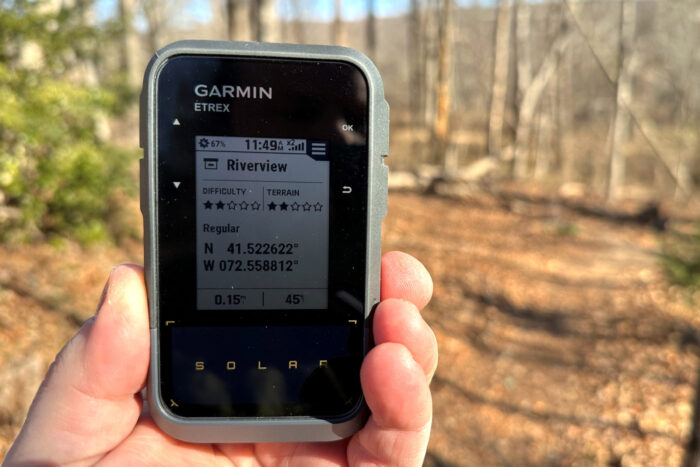
The Geocacher: If you’ve never stumbled across a hidden treasure out in the woods, it’s high time you give it a shot. Geocaching is a global phenomenon, with small containers known as caches hidden, and GPS waypoints given to those looking to find them. Geocaches are typically hidden quite well, so having the highest fidelity GPS unit you can get your hands on will help pinpoint the booty.
Leaning on a unit with Multi-Band GNSS technology, like the Garmin GPSMAP 67i, will aid the satellite receiver in seeking out signal in historically difficult areas, such as beneath tree cover or inside canyons. And certain units, like the eTrex Solar, are designed specifically with geocaching in mind, and host a “Live Geocaching” functionality that downloads cache coordinates and descriptions directly to your device.
The Overlander: Your rig can go just about anywhere, granted you know where it is you’re going. Going with a GPS with good mounting options will keep it close at hand, and having routable topographic maps will key in on trails and roads to plot a route to where you’re trying to get to.
For all of our overlanding, we reach for the Garmin Montana 700i, which has a broad touchscreen for easy nav while bouncing around. This unit also can be rigged up with a powered AMPS Rugged Mount that keeps your GPS going by keeping it on the cord. If you’re in a smaller rig like a side-by-side UTV, the inReach Mini 2 from Garmin can also be mounted using an adapter, and makes for a quick connection to your phone for messaging other drivers.

Reception
The positional accuracy of handheld GPS devices has improved steadily over the decades. Now, high-quality devices such as the ones on this list can pinpoint the user’s location within a margin of 10 meters or less.
According to Garmin, the manufacturer of multiple devices on our list, units that are equipped with the Wide Area Augmentation System (WAAS) can be accurate to 3 meters or less. Most GPS units are limited to the L1 frequency of GPS. With plans to have a majority, if not all, of our satellites running on the L5 frequency, units like the Garmin eTrex Solar and Garmin GPSMAP 67i, which can access both bands simultaneously, are ready for the future.
Global Navigation Satellite Systems
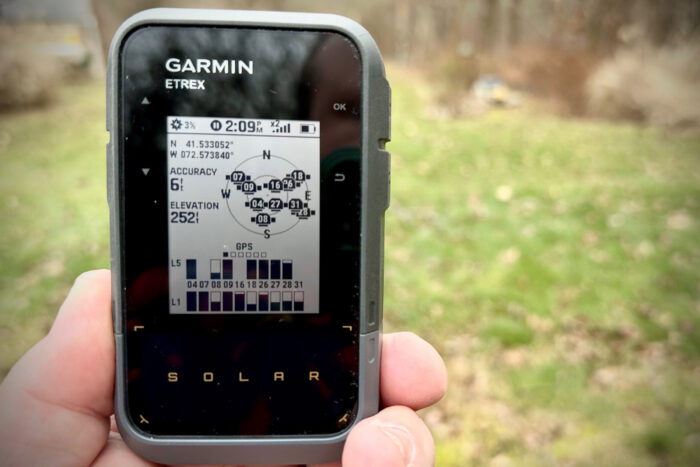
While GPS (Global Positioning System) has become synonymous with satellite navigation devices, this is only one orbiting satellite system in a constellation of systems that are known as GNSS, or Global Navigation Satellite Systems.
With more than 30 satellites in operation today, the United States Global Positioning System is easily the world’s most utilized system based on the amount of people in the United States who use products with GPS technology. It is joined by the Russian GLONASS (24), Chinese BeiDou (35), the European Union’s Galileo (30), and the regional Japanese system QZSS/Michibiki (4). In general, the more GNSS systems that a GPS device is capable of receiving, the greater the location fidelity. This is often denoted as ‘Multi-GNSS Capable’.
In recent years, GPS devices have begun to incorporate chipsets that take advantage of the different generations of satellites within individual satellite systems. These systems are constantly being updated, and new satellites are launched annually, so there are several different sets of satellites that a GPS can key in on. By broadening data collection, new GPS devices can eke out even more satnav horsepower.
As this type of technology becomes more widespread and adopted, you’ll see fewer and fewer people reaching to the sky in an attempt to find a connection. In landscapes both urban and undeveloped, large features such as canyons and skyscrapers can degrade your signal and decrease the accuracy of your GPS device. But the chances of you holding on to a signal are a lot better than they were even just a few years ago.
App Integrations

This is where things get interesting. When out in the field, you’re relying on your GPS. But when you get back home or even to camp, you can download an app to upload your tracks, waypoints, and everything the GPS recorded during your trip.
Most GPS units can pair with your smartphone and even have the capability to connect via Bluetooth. This is especially beneficial with smaller units like the Garmin inReach Mini 2, where you can connect to your phone and use the bigger buttons on your phone to communicate two ways.
Garmin has put a considerable amount of effort into its Explore App (Apple, Android). When paired to your smartphone, it allows you to enter your waypoints, plan your routes, and stay connected by being able to receive text, incoming calls, and other notifications that you have set up on your phone already.
We often rely on this option during downtime in a tent when there’s blustery weather — much better to type on a phone instead of on a small screen.
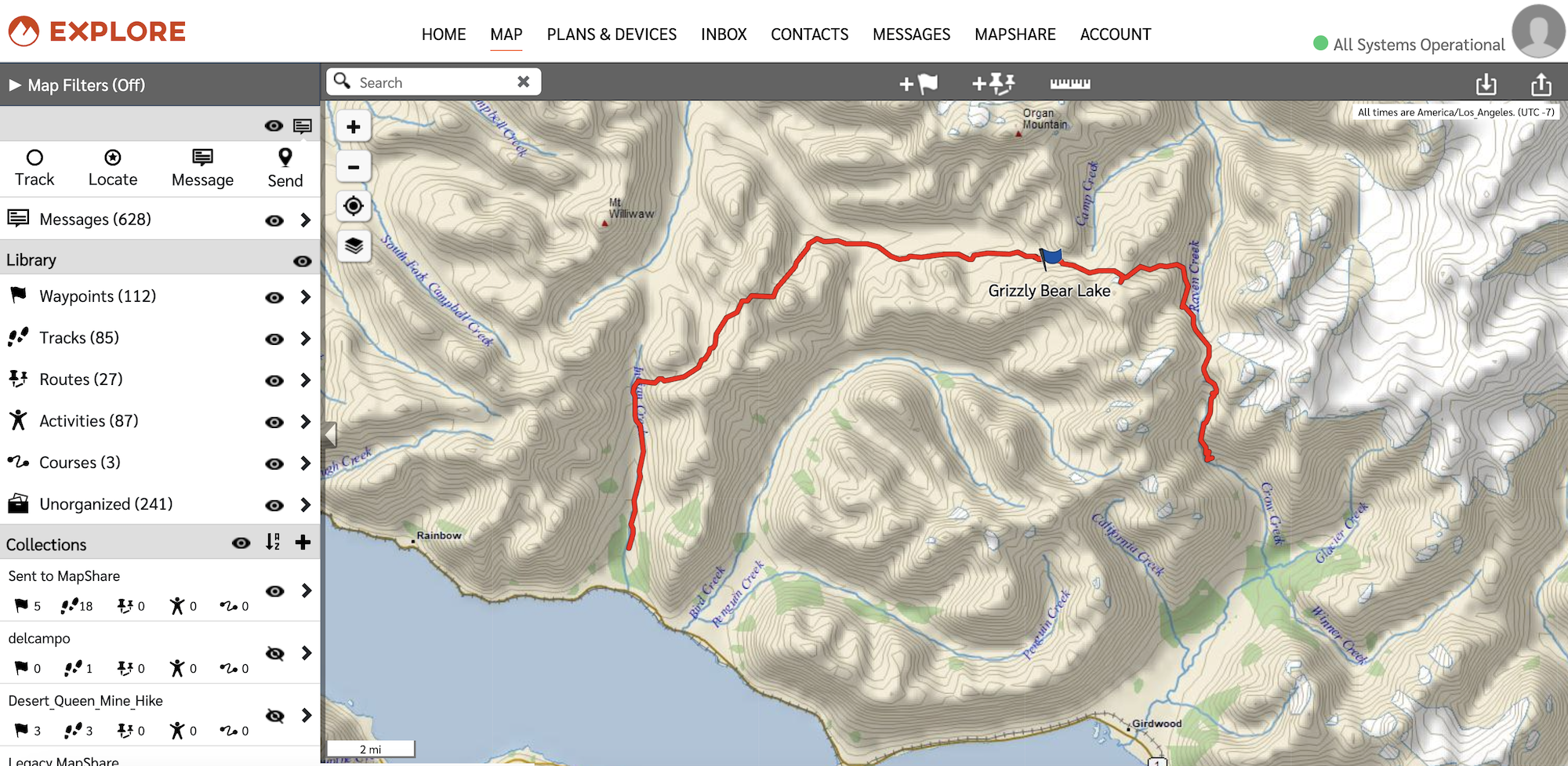
Satellite Navigation on Your Smartphone
As smartphones improve year over year, many backcountry users have taken to utilizing navigation apps such as Gaia GPS, CalTopo, or Avenza Maps to find their way. The benefit is that your phone often has a stout processor and expanded memory, which can make in-device navigation a much more enjoyable experience.
While many smartphones incorporate a rudimentary GPS chip for location finding, this is often augmented with cellphone tower pings to better triangulate your location. When you leave the coverage of cell towers, you lose this ability and with it, some accuracy. For those who don’t require pinpoint navigation, this level of information can often be adequate. But in many circumstances, having the additional data that a full GNSS receiver provides can keep you on track when it matters.
Ease of Use

Every handheld GPS device has a unique user interface you’ll have to learn as the device’s operator. Some devices, like the Garmin eTrex Solar, are operated using a small number of simple buttons, while others, like the Garmin GPSMAP H1i Plus or Montana 700i, rely on a large color touchscreen display.
No matter the configuration of your device, we recommend spending some time reading the user manual and practicing navigating with your device before you head out into the backcountry.
Additionally, Garmin has a whole video Learning Center that is dedicated to getting you dialed into your new GPS device without having to read a complete manual. These videos focus on the things you need to get you up and running.
Displays and Buttons
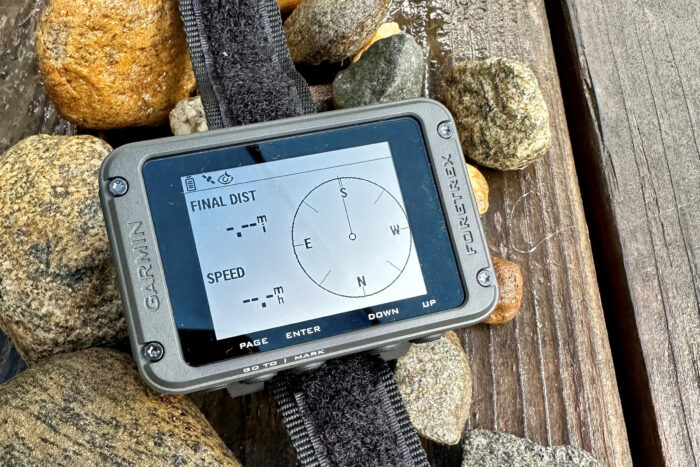
Large touchscreens tend to offer a shorter learning curve thanks to their large, bright, and colorful displays. These kinds of devices are quick to learn for people familiar with smartphone use, but they also come with some downsides.
Most notably, touchscreen handheld GPS devices are difficult to use when the weather is cold or wet. While out hunting, fishing, or hiking, it’s likely that you’ll be wearing gloves. Simply put, you can’t operate a touchscreen without touchscreen gloves, which renders high-end devices like the Garmin Montana 700i warm-weather-specific.
For a super easy-to-use handheld GPS that utilizes buttons instead of a touchscreen, we recommend the simple and affordable Garmin eTrex Solar.
To deal with the issue of glare and sunny-day readability, Garmin’s new models have been engineered with antiglare screens that make maps and data easy to decipher — even in the direct sun.
In-Device Navigation

Out of the box, most GPS devices come with a very simplistic map that displays little detail about the terrain. Some high-end devices come with multiple maps preloaded, each displaying certain information and landmarks such as roads, trails, and lakes.
Many devices allow you to purchase additional maps and upload them to the device. Some sources, such as the United States Geological Survey (USGS), offer free spatial data that can be added to your device.
Generally, the more data and information about the terrain that your device contains, the easier it will be to navigate using the mapping function of the device.
Satellite imagery, which is essentially a compilation of aerial photos of Earth stitched together, is often difficult to view and utilize on a handheld GPS device. However, some devices with larger displays like the Garmin Montana 700i are more capable of making use of satellite imagery during navigation.
Most makers of handheld GPS devices have created their own software that’s used to organize and display the tracks and waypoints that you have saved using your device.
BaseCamp from Garmin is an excellent platform that provides everything you need as a GPS user. For example, using BaseCamp, you can overlay your waypoints and tracks onto Google Earth. This is especially helpful for devices unable to utilize satellite imagery on their own.
Battery Life

Many handheld GPS devices still rely on AA batteries, which are cheap, quick to replace, and easily accessible. However, if you’re heading out on a long expedition where access to a store is out of the question, you’ll have to bring a potentially annoying quantity of fresh batteries to keep your device working. While AA batteries remain an option, some manufacturers are now making devices with rechargeable battery packs — and even solar — as a practical alternative.
Rechargeable batteries can reduce weight and save money over time. Many outdoor professionals and recreationists carry battery packs or solar panels, which are compact ways of recharging a handheld GPS in the field. Many models have rechargeable batteries that are also compatible with AA batteries as a backup. A unit like the Garmin eTrex Solar allows you to leave the solar panels at home; relying on a rechargeable Lithium battery and a built-in solar reception.
Depending on the length of the trips you’ll be taking with your device, aim for a handheld GPS that has a long battery life while in active GPS-enabled modes. Typically, one of the trade-offs of large touchscreen devices is that they tend to have a shorter battery life than button-operated alternatives.
The Garmin Foretrex 801 boasts a battery life on two AAA batteries of up to 1,000 hours. It’s hard to fathom that number for anything battery-powered, but it’s doable if you create a routine. This particular unit offers different modes that may require less energy to maintain. None of these units is a set-it-and-forget-it device. They all take a little time to get used to, but once you do, you’ll find yourself creating routines that keep you informed and powered.
Weight

Depending on where you’re going with your GPS and how you plan to get there, weight may be an important consideration. Some handheld GPS devices, like the Garmin inReach Mini 2 and Bushnell BackTrack Mini GPS weigh under 4 ounces. Others, like the Garmin Montana 700i, weigh over a pound.
Oftentimes, smaller devices will need to leave some features out in order to hit the profile they’re aiming at. When we are considering a GPS, we often weigh the ability of the GPS on its own, as well as consider if our phone will be needed to take full advantage of all of its features. A small GPS plus phone combo can be a powerful team, but many may instead opt for an all-in-one device, like the Garmin GPSMAP 67i.
Memory
Most information saved to handheld GPS devices comes in the form of routes or coordinates for a specific location you want to save for future use. For most trips, only a few waypoints are necessary.
Devices on this list are capable of saving between 500 and 10,000 waypoints at any given time, which should be more than enough — especially if you plan to clear this data or move it to another device between trips.
However, if you plan to save waypoints from multiple trips all at once, or if you want to be able to store lots of maps and satellite images on your device, look for options with plenty of storage space. High-end models often hold up to 16 GB of information, and many are also compatible with micro-SD memory cards for additional storage capacity.
Mapping

Every handheld GPS comes with a basic map, which is essentially a blank screen that includes the most noteworthy local features and nothing more. Many modern Garmin products come with a preloaded base map with contour lines that convey elevation, points of interest, and major trails and roads.
On most devices, maps can be added to enhance the default base-level map, creating a more detailed layout of the terrain around you. Remember, additional maps consume memory, so ensure your device isn’t full if you want to add more maps.
Some simple devices, like the Garmin Foretrex 801, are unable to accept new maps. Others, like the Garmin Montana models, can be thoroughly customized. The fewer map features on a GPS unit may mean more time pre-planning your next adventure. But the more features might create bloat that you don’t need. It’s important to find balance.
Satellite Messaging and Emergency Features

Satellite messaging devices have the ability to send (and sometimes receive) messages in areas where cellular devices don’t have reception. Now, many handheld GPS devices have been built with this capability to create a class of all-in-one backcountry navigation and communication tools.
To use these messaging features, a paid subscription is usually required, which allows a limited number of messages to be sent and received each month.
For those who wish to communicate with others while out of cellphone range, this is an invaluable feature that can quell worry from afar and keep everyone in the loop. Some satellite messaging devices can be programmed to automatically send out predetermined messages at regular time intervals.
In the event of an emergency, you must be able to quickly signal for help. Some devices have an SOS button that can instantly trigger a response from local emergency medical services. On this list, the Garmin inReach Mini 2 has more communication features than navigation features, but it’s a great little device.
Geocaching
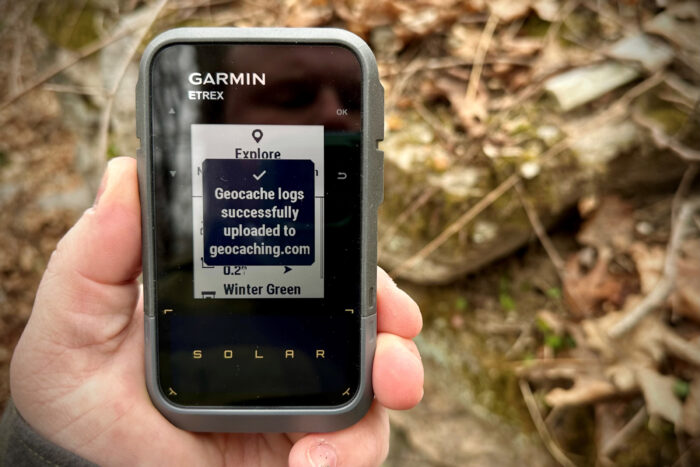
Geocaching is an increasingly popular outdoor activity that utilizes navigational tools to search for cool treasures that have been hidden all over the world. Most GPS units are suitable for assisting enthusiasts in this hobby, and some are even designed specifically for geocaching adventures.
The Garmin eTrex Solar is a simple and excellent personal GPS tracker that serves as an affordable entry point into the exciting world of geocaching. It receives automatic cache updates from Geocaching Live, and allows you to upload your successful finds directly to your Geocaching profile from within the device.
Barometric Altimeter
Most handheld GPS devices include a barometric altimeter. When navigating, it’s often highly important to be aware of your current altitude with an accurate barometer. Using pressure sensors, an altimeter can also help you track weather patterns and trends, which is important information to have — especially in the mountains.
Compass
A three-axis compass, which is included in most midlevel (and up) handheld GPS models, allows you to read direction no matter how you’re holding the device. It’s a handy feature, though it’s not strictly necessary because it’s a good idea to carry a standard compass as a backup anyway.
What About GPS Watches?
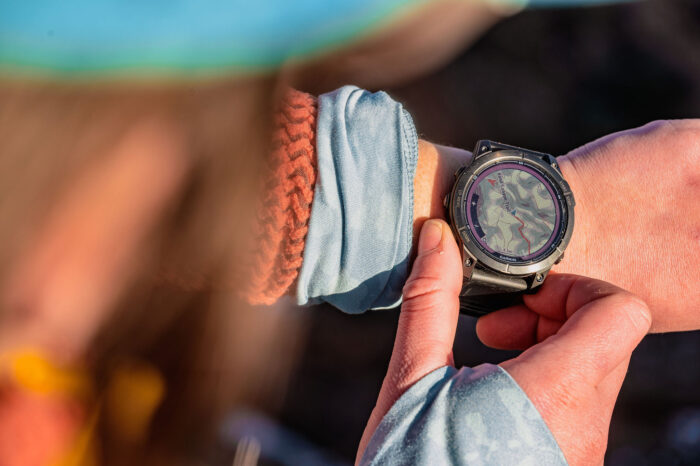
In recent years, GPS watches have become smaller, faster, and more powerful than ever — now rivaling many of the functionalities of handheld GPS units. The same satellite navigation chipsets are used across both styles of devices. While a dedicated device will almost always be quicker, a GPS watch can have impressive tracking capabilities, especially if it is multi-GNSS capable.
While those who are drawn to the more all-in-one GPS offerings — like the Garmin GPSMAP 67i or Montana 700i — likely won’t consider a GPS watch as a viable alternative, those who are looking into a smaller device that relies on a phone for expanded navigation capabilities may find them to be a possible alternative.
If you land in this camp, consider that a GPS watch will often have a shorter battery life compared to a small GPS unit. Additionally, their antennas are significantly smaller than those of a purpose-built device. This can result in a longer wait time when seeking a location lock.
Price & Value
GPS devices can run a range of prices from around $100 for simple trackers to $700+ for full-featured touchscreen tablets. Consider what you’ll be using your GPS for most when deciding which to pick up — long-distance backpackers may want to invest a bit more compared to once-in-a-while hikers.
Budget
GPS units have been around for a while now, meaning there are cheaper legacy products that still provide a great experience, as well as modern options meant to provide just what you’re after. Breadcrumb tracking is the norm here, where the unit will take a location at set intervals, and you can use this later to return to your start.
Budget GPS units typically will only receive a few satellite services, GPS, and either GLONASS or Galileo. The Bushnell BackTrack Mini GPS (
$105) tacks on another as well as a barometer, making this an outsized value unit that we suggest for simple backtracking. The Garmin eTrex 22x ($180) is a bit of an old-school device at this point but provides reliable navigation and a color screen.
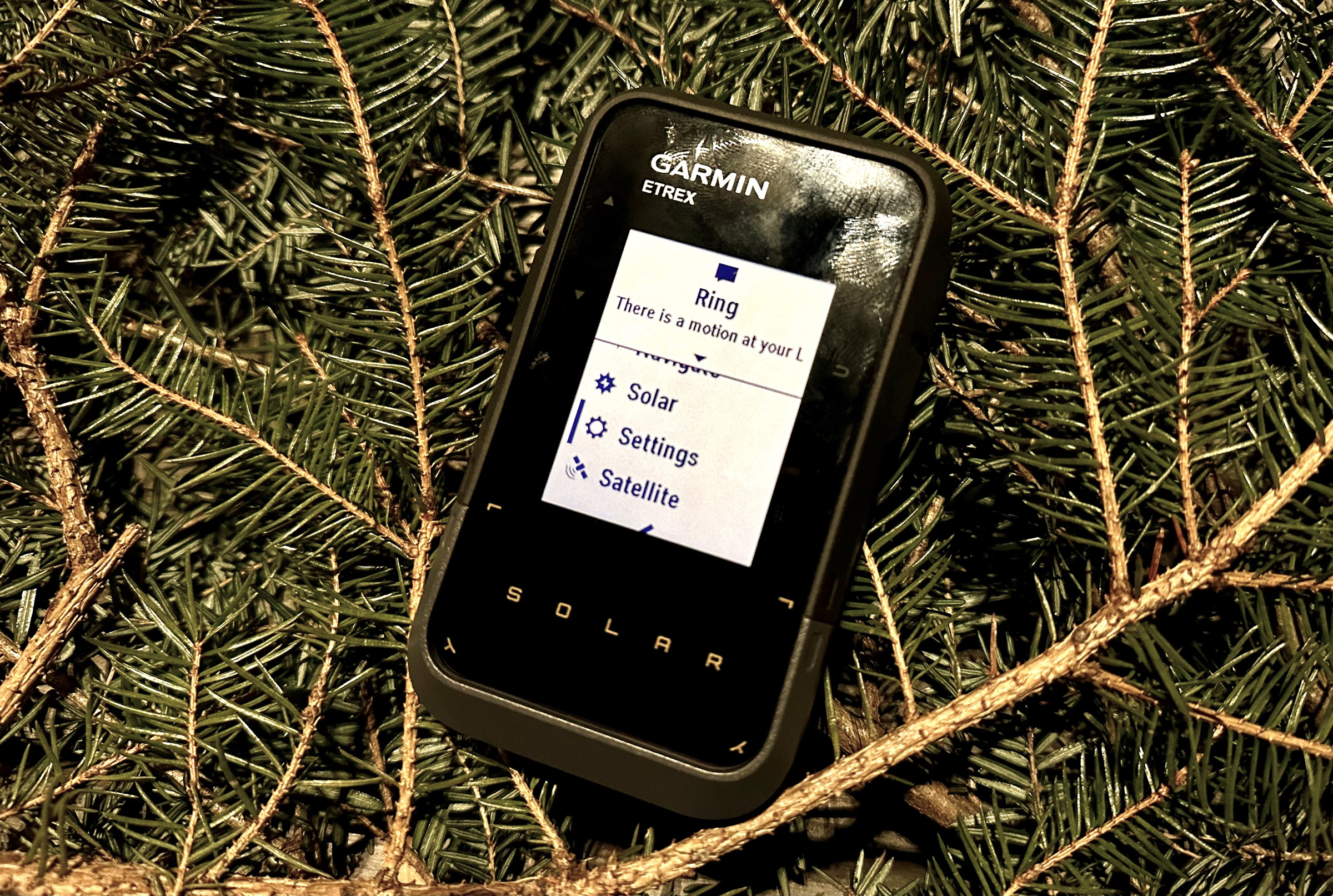
Mid-Tier
Jumping up to paying between $200 and $400 can get you a lot more in tech, including the full suite of 5 standard satellite services (GPS, GLONASS, Galileo, QZSS, and BeiDou), a battery life of 100+ hours, and a modern user interface with app integration. This last feature is one of the most notable, and creating routes on the fly and then porting them over to the Garmin eTrex Solar ($250) works flawlessly.
This price range also opens up some specialization, like the wrist-mounted and tactical Garmin Foretrex 801 ($250) and the satellite messenger/GPS inReach Mini 2 ($400). The Garmin eTrex 32x ($300) is a bit of an outlier at its price but provides a clean user experience and good-enough accuracy.
Premium
If you’re paying $700+ for a GPS device, it’s got all the bells and whistles: Satellite messaging capability, bright touchscreen, and adaptability to a larger ecosystem of mounts. These devices are sometimes best mounted in a vehicle, like the Garmin Montana 700i, which works excellently on an ATV or side-by-side.
The $600 Garmin GPSMAP 67i is our choice of the best GPS available today, and it’s got pretty much everything you could need on it. Remember that using an inReach capable device will also require a subscription to the service — another fee to consider when going with a premium unit.
Frequently Asked Questions
All of the handheld GPS devices on this list are high quality. We recommend each one for different reasons. Of these options, determining which one is best is all about figuring out what your needs are and which device best suits them.
If you’re looking for a device that has a large color screen but is also compact and lightweight, the Garmin GPSMAP 67i is an excellent choice. If you’re looking for a packable device that can reliably communicate via satellite, the Garmin inReach Mini 2 would be a great buy.
With a clear signal, many modern handheld GPS devices can pinpoint your location with a margin of error of just a few meters. This level of accuracy is great for emergency scenarios, reliable waypoint setting, and geocaching. Integrated altimeters and three-axis compasses in handheld GPS devices are also more accurate now than ever before.
Keep in mind, however, having a compass or map in your pack is still recommended, as they are a sure thing that doesn’t rely on a battery or satellite to get you out of a jam.
For accurate navigation in regions where cellular service isn’t available, handheld GPS devices are certainly better than smartphones for reliable mapping and positioning. Purpose-built GPS devices also tend to hold up much better to the elements than smartphones.
Though smartphones can be helpful navigational tools, their short battery life, reliance on cellular service, and general fragility mean they just aren’t the best option for proper expeditionary navigation.
Additionally, their GPS accuracy is within 5 meters — or roughly 16 feet. Though this number continues to improve as smartphones get upgraded to newer models, the fact remains that GPS units like the one in this guide are too. With dedicated GPS handhelds already ahead of smartphones in terms of accuracy and reliability, we have no reason to believe that’s going to change.
While some geocaching locations can be navigated with a smartphone, a handheld GPS device like the Garmin eTrex Solar is really the best tool for geocaching. With a handheld GPS, you can enjoy geocaching sessions without cellular service and save waypoints so you can return to specific locations over and over again.
Geocaching, arguably the largest and most popular geocaching database on the planet, can pair with most handheld GPS units. It’s also available as an app for smartphones, but once you pair your handheld GPS with their desktop site, you may never need to use the app again.

The Best Satellite Messengers of 2025
Failure isn’t an option when it comes to choosing a satellite messenger. When you absolutely need to get the word out, here are the best sat messaging devices in 2025.
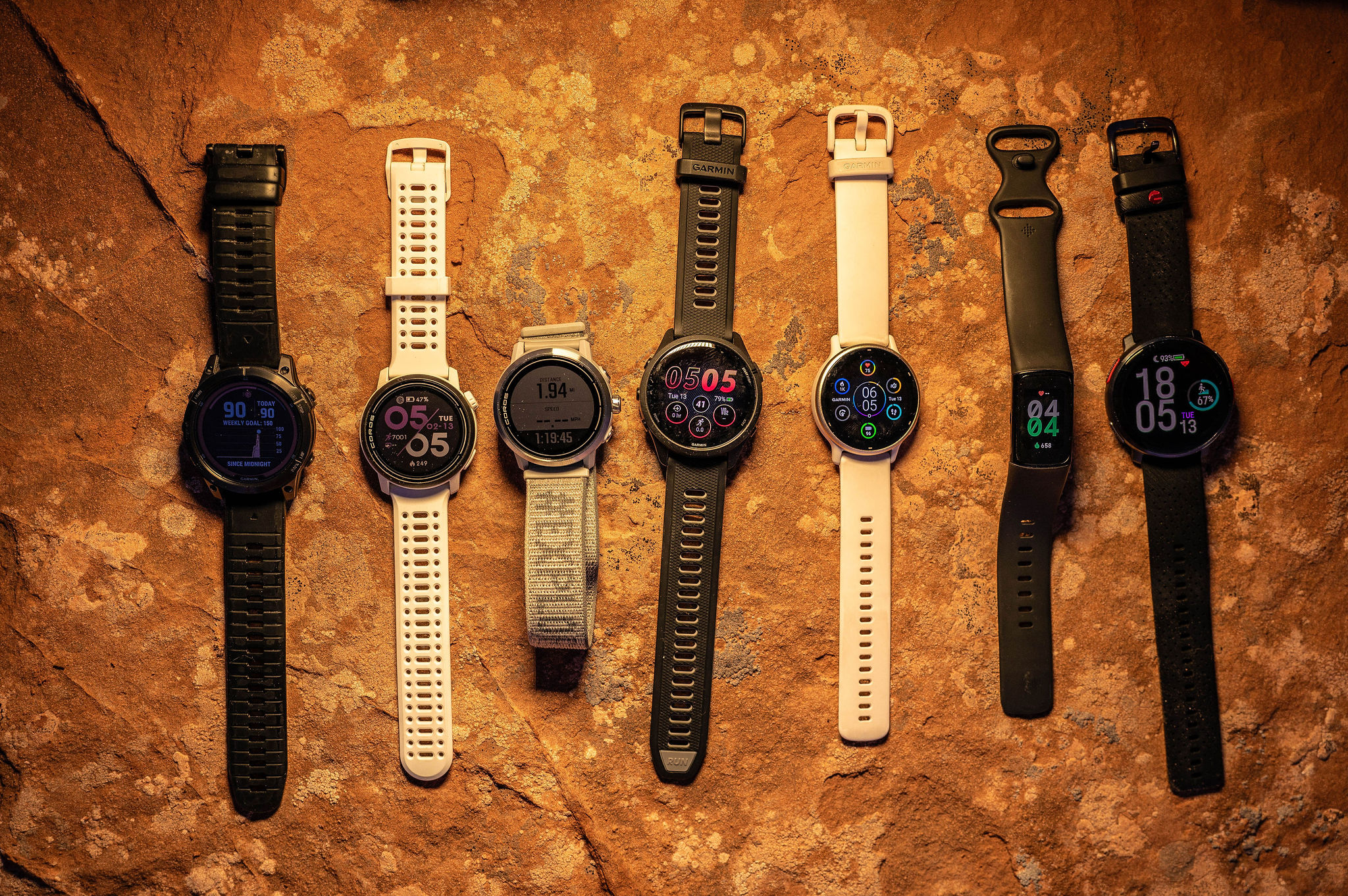
The Best Fitness Watches of 2025
We tested the best fitness watches of 2025 with options for every budget. Our top picks include Garmin, COROS, and more!






